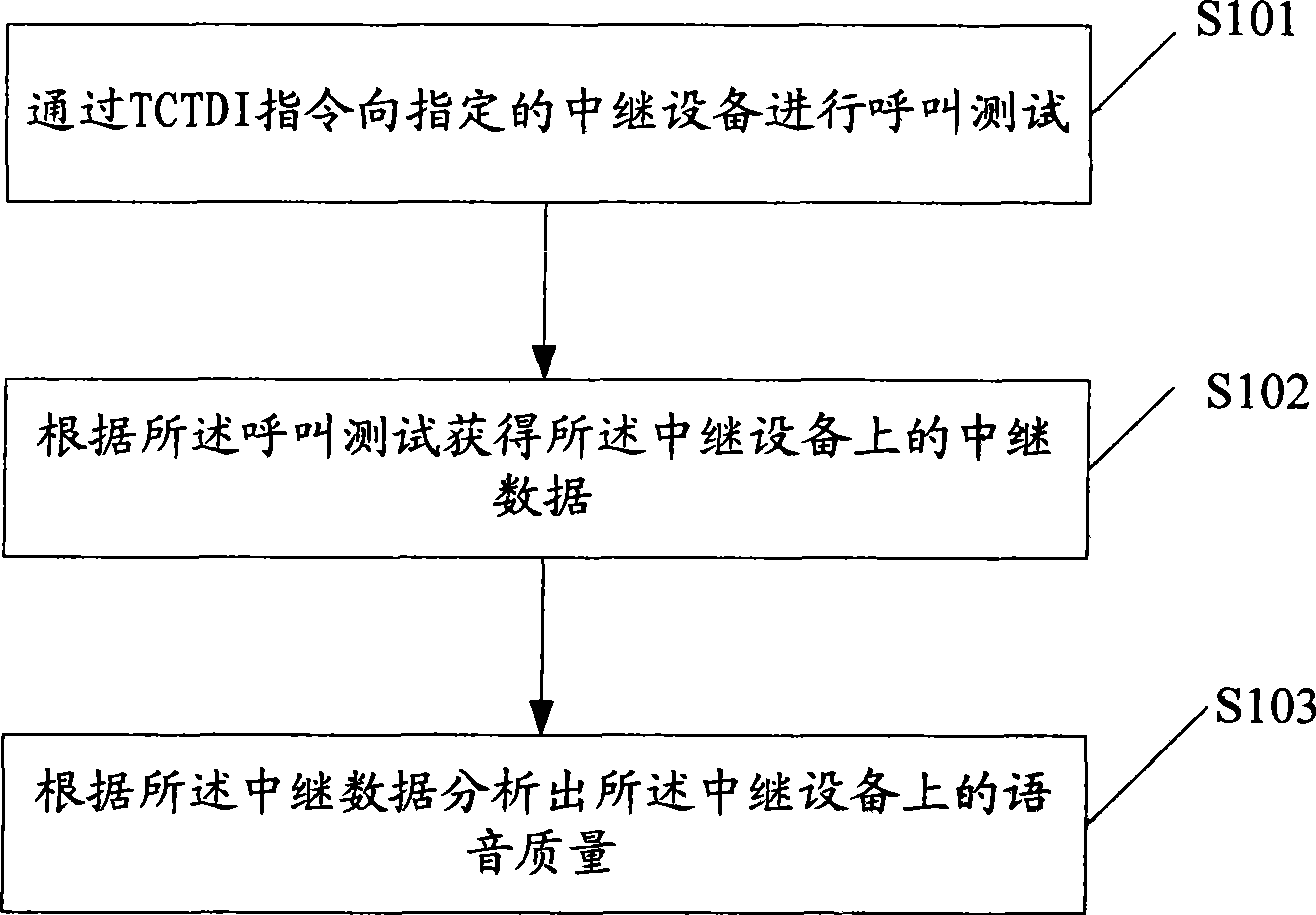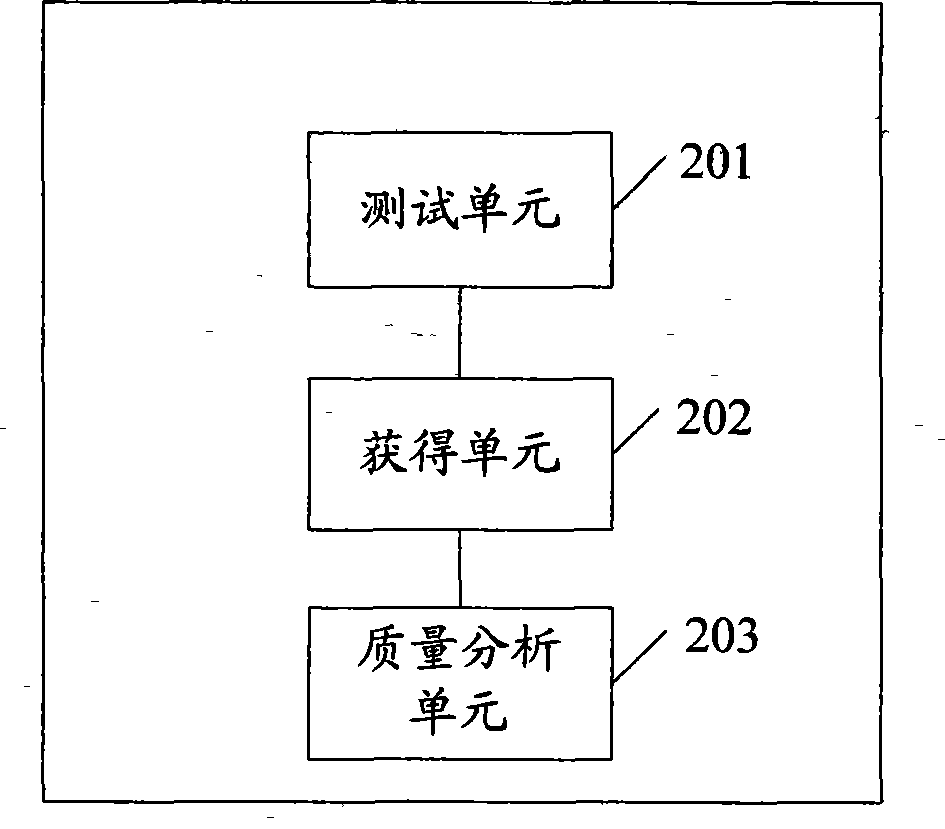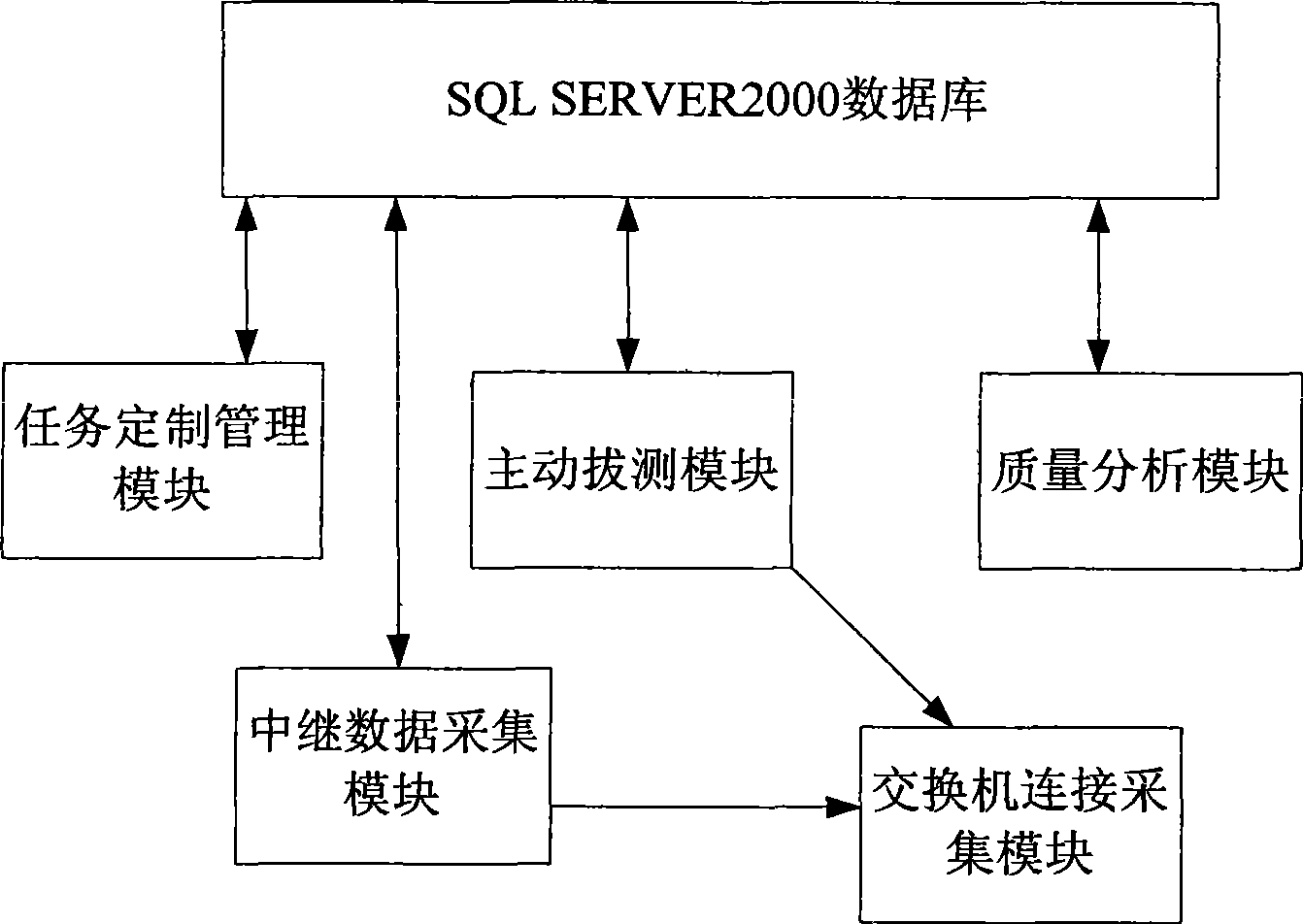Method for detecting voice relay passageway and equipment thereof
A relay device and path technology, applied in the field of communication, can solve problems such as not being able to meet daily maintenance requirements, increasing costs, and not supporting specific transmission path tests, etc.
- Summary
- Abstract
- Description
- Claims
- Application Information
AI Technical Summary
Problems solved by technology
Method used
Image
Examples
Embodiment Construction
[0021] Embodiments of the present invention will be described in detail below in conjunction with the accompanying drawings.
[0022] figure 1 A flowchart of a method for detecting a voice relay path in an embodiment of the present invention is shown, including:
[0023] Step S101: performing a call test to a specified relay device through a TCTDI command;
[0024] Specifically, the call test is performed by regularly sending a dial-out command to the relay device. The dial-out command includes the information of the relay device specified for the dial-out test, the dial-out time, the dial-out number, and the like.
[0025] Step S102: Obtain relay data on the relay device according to the call test;
[0026] The relay data includes voice information, circuit DIP information, SNT information, and the like.
[0027] Step S103: Analyze the voice quality on the relay device according to the relay data.
[0028] corresponding, figure 2 A schematic structural diagram of detect...
PUM
 Login to View More
Login to View More Abstract
Description
Claims
Application Information
 Login to View More
Login to View More - R&D
- Intellectual Property
- Life Sciences
- Materials
- Tech Scout
- Unparalleled Data Quality
- Higher Quality Content
- 60% Fewer Hallucinations
Browse by: Latest US Patents, China's latest patents, Technical Efficacy Thesaurus, Application Domain, Technology Topic, Popular Technical Reports.
© 2025 PatSnap. All rights reserved.Legal|Privacy policy|Modern Slavery Act Transparency Statement|Sitemap|About US| Contact US: help@patsnap.com



